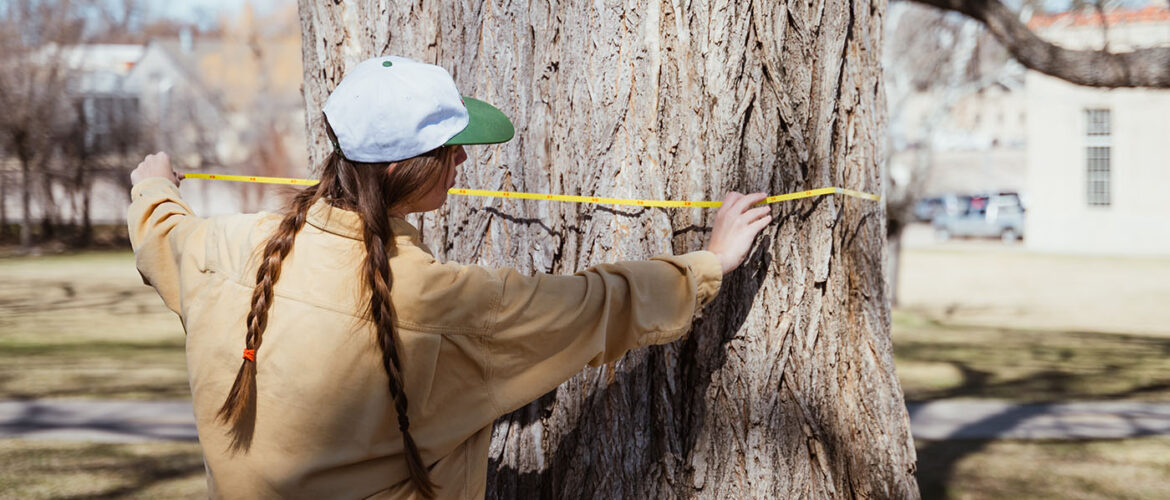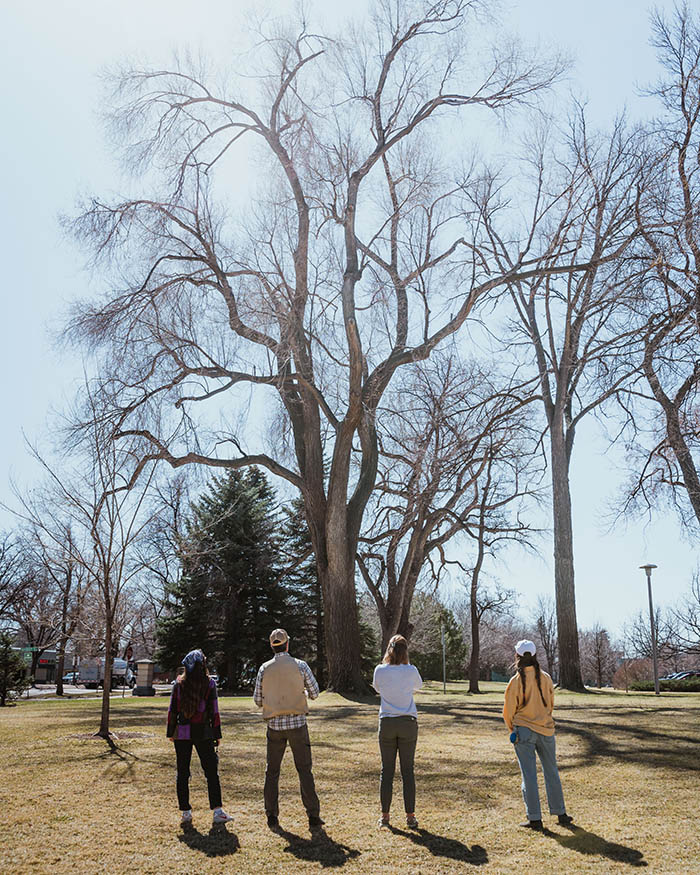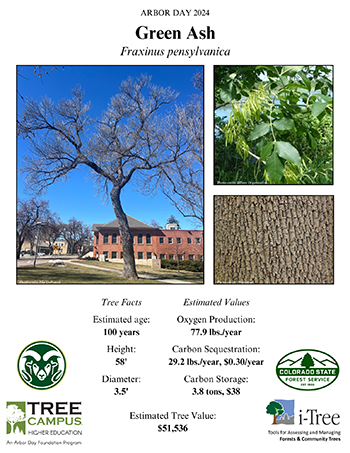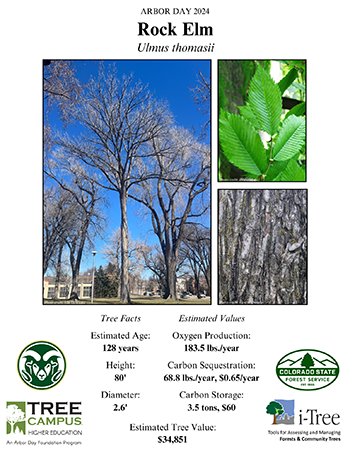
Colorado celebrates Arbor Day, the tree planters holiday, on the third Friday of April every year. This year, Colorado Arbor Day is Friday, April 19, and CSU – a “Tree Campus” certified by the Arbor Day Foundation – will celebrate by planting trees, as it does every year.
Arbor Day began in Nebraska in 1872, and now it’s recognized in all 50 states. Planting a tree is a powerful symbol of care for the community and the future.
Trees provide many benefits. They’re beautiful, and they offer shade to people on hot summer days. Various species of birds, small mammals and invertebrates make their homes in trees, and other wildlife rely on bark, leaves, cones and fruits for food. But trees also store carbon and remove harmful pollutants from the air, along with a host of other money-saving economic benefits that often go unnoticed.
How much is a tree worth?
Scientists have come up with ways to calculate the economic value of some of the ecosystem services that trees provide. Elle DeWaard, a forestry technician at the Colorado State Forest Service, spent a morning mid-March with CSU forestry students to understand the economic impact of some of the trees on campus.
DeWaard met Eliza Bohinski and Allyson Lee, students in the Forest and Rangeland Stewardship program, at the Warner College of Natural Resources. Near the Glenn Morris Field House, they measured trees to estimate their economic value and show just how valuable the trees being planted there on Arbor Day 2024 will be over the course of their lives.
Arbor Day Celebration
- Tuesday, April 23
- Noon – 1 p.m.
- College and University
- Near Glenn Morris Field House
- Join us to plant trees and learn about Arbor Day.
DeWaard, Bohinski and Lee collected data on four trees: American elm, rock elm, green ash and Siberian elm. Using forestry tools such as laser rangefinders and diameter tape, the three students measured tree height, diameter at breast height and crown width.
DeWaard then entered the data into i-Tree to get a dollar value of the oxygen production, carbon sequestration and carbon storage that the trees provide. i-Tree is software produced in collaboration among the U.S. Forest Service and many contributors that offers estimates on the benefits of individual trees. It can return insights into carbon dioxide sequestration, air pollution, stormwater impacts and energy savings. To use it, you enter a tree’s location, species, diameter and conditions. The ecosystem services can be projected up to 99 years in the future.
DeWaard created posters for each of the measured trees that detail their economic value for a few key benefits: oxygen production, carbon sequestration and carbon storage. In total, these four trees provide an estimated $200,000 worth of ecosystem services over the course of their lives.
“As a forestry student at CSU and a forestry technician at the CSFS, it feels really special to create something for the campus and develop a connection to these beautiful campus trees,” DeWaard said.
This activity estimated a dollar value of a small sample of the trees on CSU’s campus, and it offers another way of appreciating the many ways that trees enhance our world.



CSU certified as a Tree Campus for 13 years
The Arbor Day Foundation hosts several programs to promote trees and tree planting. Tree Campus Higher Education is a framework for colleges and universities to grow and care for their community forests, requiring campuses to meet five standards:
- Campus tree advisory committee.
- Campus tree care plan.
- Dedicated budget.
- Arbor Day observation.
- Student engagement through service projects.
In 2024, CSU celebrates the thirteenth consecutive year of being a Tree Campus, joining around 400 campuses nationwide in this distinction.
CSU cares for more than 10,000 trees on the Larimer County campuses, investing more than $337,000 in the campus tree program in 2023. These investments are guided by the Campus Tree Advisory Committee, which is led by CSU Facilities Management and supported by a broad representation of stakeholders from CSU Extension, Associated Students of CSU, the Colorado State Forest Service, College of Agricultural Sciences, City of Fort Collins Forestry Division and the public.
Learn 46 facts about CSU’s trees and more about the Tree Campus Higher Education program.





